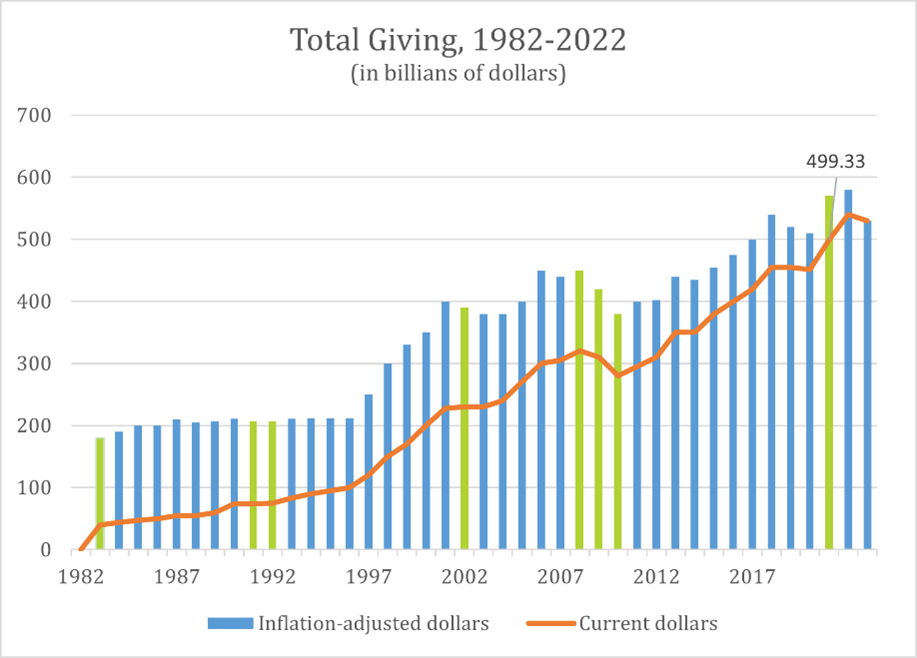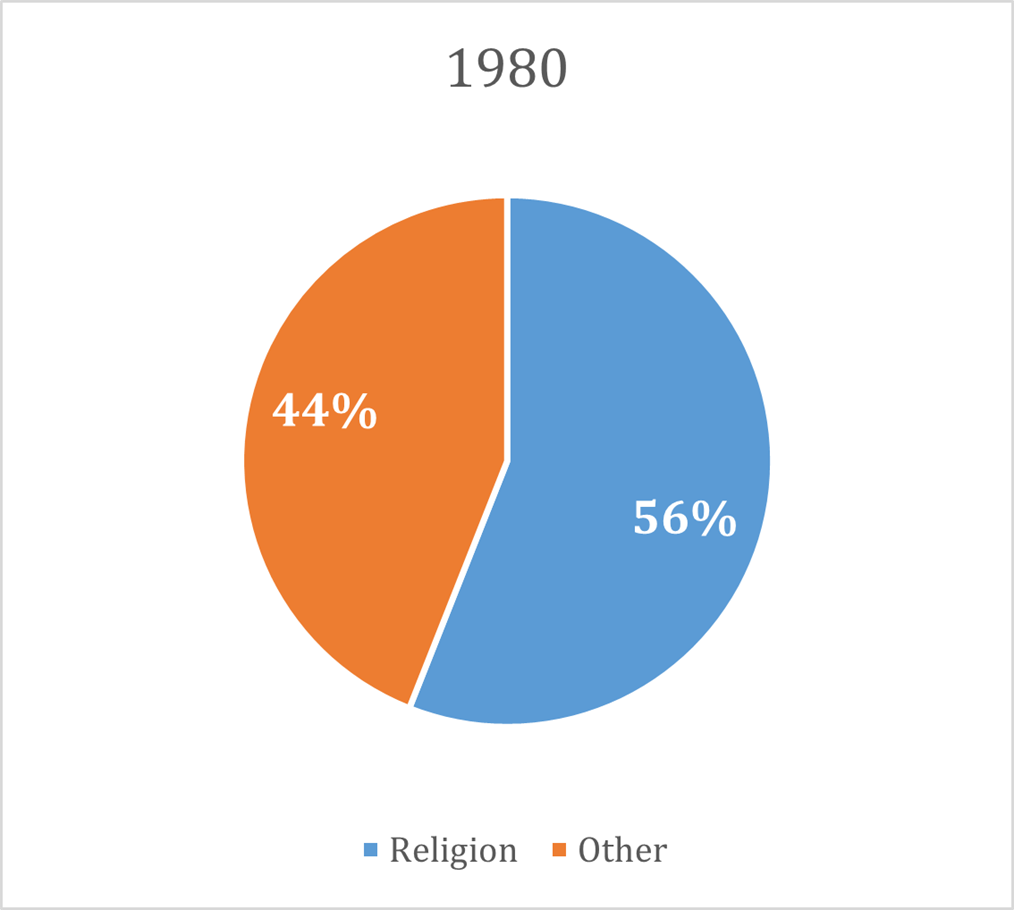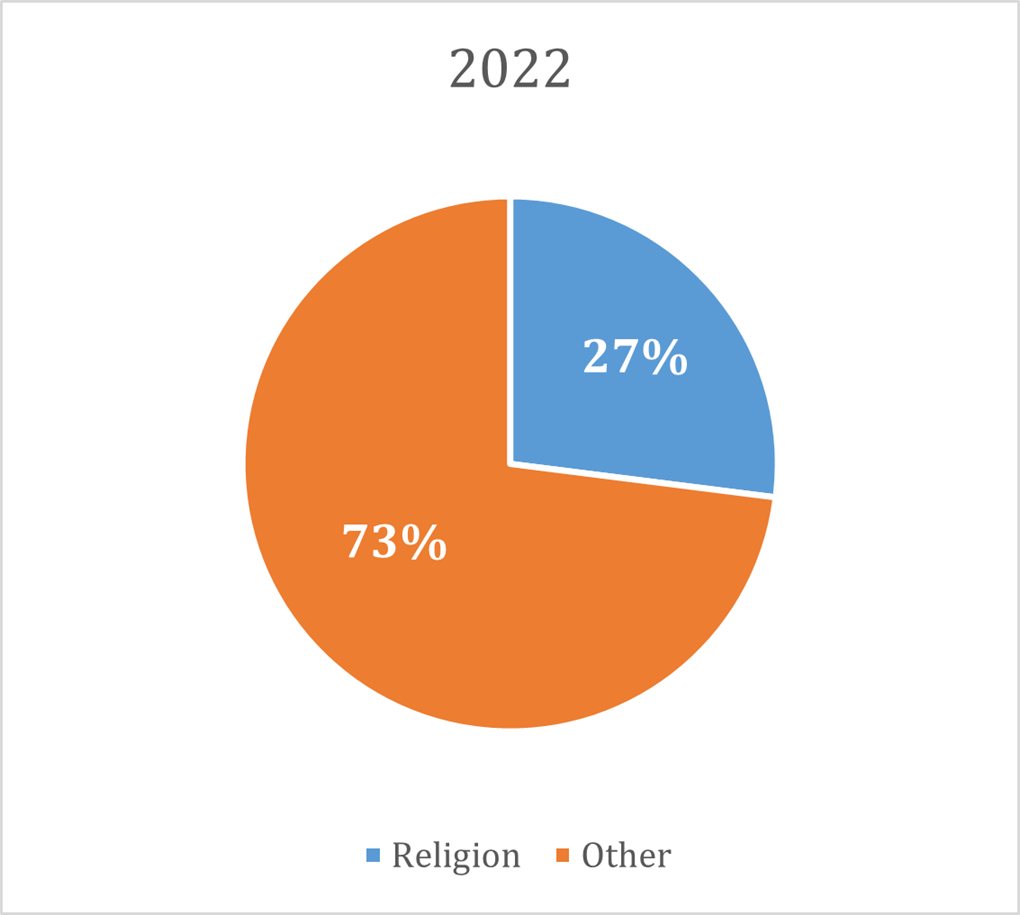By Brad Layland, CEO and Senior Consultant
Each year Giving USA publishes a report on charitable giving in the United States. Except for a few years when there were significant downturns in the economy, giving in the United States has always increased or remained steady. However, the 2022 data was just released and shows that giving is down. This chart outlines giving over the last 40 years:
As you will see, giving in 1987, 2008, and 2009 was modestly down—but only under very difficult or unusual economic conditions. In 2022, however, giving was down more than 3.4% in current dollars and a staggering 10.5% when adjusted for inflation.
The chart below zeroes in on giving to religious causes, including churches and faith-based non-profits:
From this chart, we can see that giving to religious causes is up 5.2% in current dollars and is down 2.6% when adjusted for inflation.
So how do we interpret this data?
To begin with, I am not concerned about the decline in giving overall. During the pandemic years of 2020 and 2021, money was flowing into the economy and the needs were exacerbated in a world dealing with the pandemic. Giving rose more in those years than ever in recorded history. So, if you average the increase in giving over the last three years, giving is still up 4.7% – although this does not take inflation into account. But even with inflation-adjusted dollars, overall giving is effectively flat with a 0.3% increase over the last three years.
When we zero in on giving to religious organizations, however, the statistics are VERY alarming; they reflect the general state of faith in our country. In 1980, 56% of all money given in the United States went to religious causes.[i] Just 40 years later, that percentage is down to 27%.
[i] Giving USA 2022 Highlights
Historical % of Giving Related to Religion
What should our response to this crisis be? Should we send more direct mail pieces, or have even larger, more creative fundraising events? No – tactics alone will never get to the heart of the issue. The best way to address this crisis is to focus on making our fundraising as relational and transformational as possible. Our strategy needs to be as relational as possible at every level. Our commitment to the donor must include communicating the impact of their gift – that way, the donor is also impacted through the gift they have given.
But transformation begins with us. Let’s each ask ourselves – how am I approaching my own giving? Did my giving go down or up last year? Am I supporting my local church and other worthy non-profits? I challenge you to do an evaluation of your own giving and consider making some goals for yourself about giving.
In addition to how we engage our donors, we must train the next generation in giving. Teaching them that they should be givers is not sufficient. We should also teach them about the responsibility to be good stewards of the resources we have and involve them as much as we can. My wife and I work to involve our children in our giving decisions and each year we talk about the organizations our family supports. We also bring our kids with us to a conference, The Gathering, where we talk about our responsibility and opportunity to give.
In closing I would like you to reflect on this quote with me– C.S. Lewis said:
“I do not believe one can settle how much we ought to give. I am afraid the only safe rule is to give more than we can spare. In other words, if our expenditure on comforts, luxuries, amusements, etc., is up to the standard common among those with the same income as our own, we are probably giving away too little. If our charities do not at all pinch or hamper us, I should say they are too small. There ought to be things we should like to do and cannot do because our charitable expenditure excludes them.”





